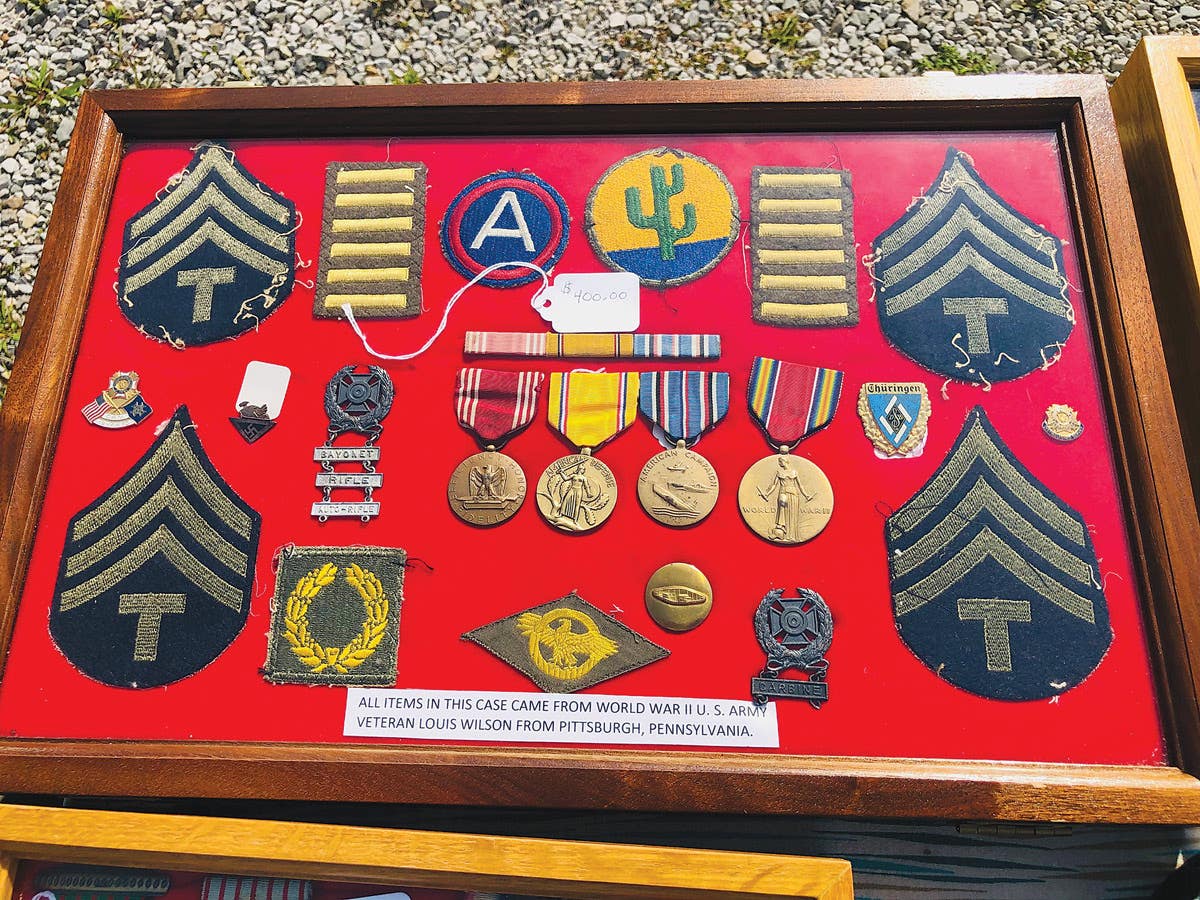Long-Distance Collecting
Helpful tips for buyers and sellers of militaria and beyond.
Tips for buyers and sellers
By Peter Suciu
If you’re a collector of antiques or other bric-a-brac, you’ve likely had those stressful moments filled with worry that an irreplaceable item is lost. Days, possibly weeks, have passed and yet the item hasn’t arrived. As the buyer you can only wait … and possibly hope for the item to arrive.
This worry can be especially trying if you didn’t pay for insurance, and in hindsight trying to be penny smart and pound-foolish was far more than foolish. However, all hope isn’t lost. If you paid with a credit card, you might still be in luck — even if you didn’t opt for insurance.
Whether it is on eBay, a purchase from a collectible forum or just from a distant antique shop, you’re likely covered for losses if you decided “to charge it.” Simply by using a credit card – as opposed to a debit card, which takes money directly from a savings or checking account – could at least get you the money back if the item never arrives.
“When you buy something and use your credit card you’ve entered into two contracts,” says Professor Ralph M. Stein of Pace Law School at Pace University. “The first is the contract you enter with the person selling, who may offer insurance. But you also have a contract with your issuer, so that if you have a complaint you can resolve the problem with Visa or Master Card.” Smart sellers should, therefore, consider opting to require insurance for large purchases, so as to cover themselves for large ticket items, even if the buyer refuses.
WHEN SHIPPING COLLECTIBLES
When things go wrong, and an item is lost or broken, buyers and sellers need to work together to resolve the problem. It is very easy for a seller to simply do a charge-back when plastic was used to buy an item, or for a seller to claim no responsibility when a money order was used – but only together can the problem be addressed.
Most importantly, buyers and sellers should both realize that legitimately lost and broken items are not either of their faults. The biggest miscommunication typically starts when buyers and sellers point fingers at each other, rather than the shippers.
TIPS FOR BUYERS
*A credit card gives you the most protection. When used, a credit card essentially protects your investment. A check can be cancelled but this carries a fee and internationally not all checks can be canceled.
*A money order is essentially the same as sending cash, with one exception. If the letter is lost, you can file a claim to get a replacement. However, if the buyer cashes it, and does not send the item, you have no recourse.
*Registered mail is generally the safest way to send a package, but because an item is so closely guarded, it can make tracking it extremely challenging and all but impossible for the recipient.
*Registered mail only covers up to a set value – typically around $1,000 per item. So if you’re buying an item worth more than that, you should talk with your credit card company about insurance they provide.
*Be patient when registered mail is used, especially internationally as it can take time to clear customs and make it to your door.
TIPS FOR SELLERS
*Many private shipping firms, such as UPS, FedEx and DHL will not cover antiques, as these items cannot easily be replaced. Even with proof of purchase, sales receipt and appraisal these items are not covered by insurance.
*Even with common items, the replacement value can be quite small. Most third-party, private shipping firms will let you pay for the privilege of declaring the value, but don’t confuse this with replacement value or even insurance. If the item is lost or broken the shipping may still claim liability of $100.
*Registered mail is the safest way for sellers to ship expensive items, especially as a signature is required.
TIPS FOR BOTH BUYERS AND SELLERS
*Should an item be broken, regardless of whether it is a government postal carrier or private carrier you need to retain all of the materials you received in order to file a claim. Take photos and make copies of all documents. It is important to note that only sellers as the sender can file a claim for a broken or lost item.
*If an item is lost, buyers who used a credit card can often do a charge-back simply because the item did not arrive. If an item is lost and the buyer paid with a check, the seller can choose to ignore the problem. For this reason, to keep both sides honest and to avoid a bad situation turning very ugly, a wise move is to send valuable items via registered mail, where they are typically under lock and key while in transit.
Peter Suciu is a freelance journalist and when he isn't writing about militaria you can find him covering topics such as cybersecurity, social media and streaming TV services for Forbes, TechNewsWorld and ClearanceJobs. He is the author of several books on military hats and helmets including the 2019 title, A Gallery of Military Headdress. Email him and he'd happily sell you a copy!







